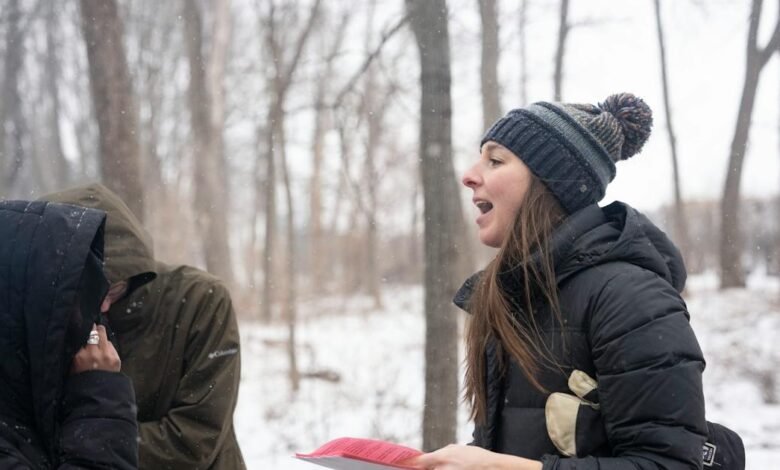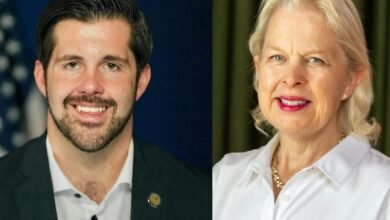
Julia Battern has gone to great lengths to find new ways to inspire as a teacher — even as far as Antarctica.
But some of the best lessons are being cultivated at home.
Just behind the football stadium at Mankato East High School, where Battern has taught science for 11 years, is a 2½-acre wooded area — one of more than 145 officially designated school forests in Minnesota and an outdoor lab of sorts for Battern’s wildlife ecology class.
Here, she said, students learn of their connections to forests and prairies, and the food they produce, hopefully inspiring them to become good stewards of the land. They’ve learned about how to combat some of the state’s most difficult invasive species and how to calculate carbon footprints. Such lessons, and the partnerships she has created, have led to Battern receiving a state award this month for her conservation efforts.
The Buzz Ryan Award goes to a person who does not work for the state Department of Natural Resources but is committed to good forestry, and is named after a DNR legend who worked for 47½ years in the Cloquet area and wrote extensively about the history of early logging and forestry in Minnesota.
Vanessa Zachman, a DNR forester who nominated Battern for the honor, said: “Julia goes above and beyond when it comes to engaging her students in good conservation work and education.”
Last week, Battern’s students stood around a campfire on a bitterly cold day, reflecting one by one about what they learned in the semester-long class. The quick testimonials included nods to trail work, trash pickup and tree planting, as well as a common bond against an invasive enemy: buckthorn.
Each year, students clear out the noxious weeds, which sprout in tree-like fashion. The management plan was created with the help of the DNR, and dates to Battern’s first year at Mankato East, when she knew little about buckthorn or the proper way to get rid of the tallest intruders.
Stepping off a trail, she pointed to a thick stump about 5 inches off the ground — a remnant of a time when teacher and students didn’t know it should be cut down to the soil. Be careful, in other words, or you’ll trip. Now, Battern’s classes have the system down, and after clearing out the buckthorn, they plant seeds.
Those plants can take years to mature, however, “so it is a process, and for the students, they only get to see themselves as a snapshot of that,” Battern said. “So I have to tell them the story that well over a thousand students have been a part of these efforts over the years.”
Alison Smasal, a senior, said the wildlife ecology course spurred her to action on two fronts: She has begun composting food scraps and working to help reduce her family’s carbon footprint with a couple of energy conservation measures. This after completing a carbon footprint calculation in class.
“I knew about carbon issues and all that. But I had no idea how much goes into each person’s carbon footprint,” said Smasal, who plans to major in environmental science in college.
She added that learning by doing, through the time spent on forest projects, can beat traditional lectures.
Battern, who traveled to Antarctica in 2022 thanks to a sponsorship from a local power company, said she better understood how burning fossil fuels in Minnesota can affect Antarctica.
At the campfire last week, she gave a shoutout to Issaic Depyper, a junior serving as a peer tutor after he took part in a spring semester class that tapped the forest’s silver maple trees for sap for the first time.
Then, Battern read from the book “Braiding Sweetgrass,” with its message about giving back to nature when taking gifts from the Earth. After finishing, she noted that berries could be harvested in the forest in the summer, and invited students to return.
“It’s always open, right?” she said.
Source link




